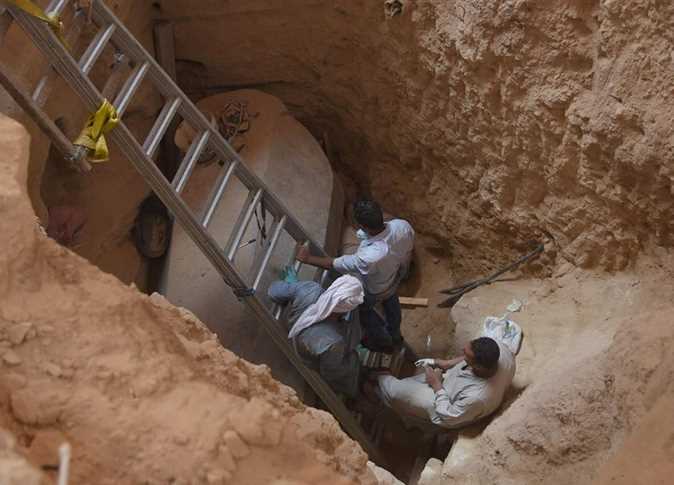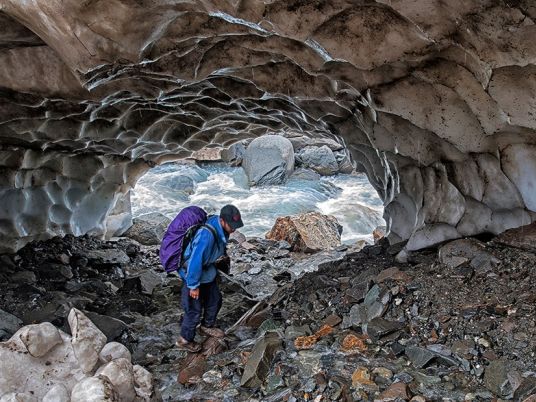
To the naked eye, the terraced fields seem close enough to touch: hardly 4 km as the crow flies.
But in the ancient way of Himalayan travel, they're still 20 switchback roads and several torturous hours away.
My blistered feet and the blighted weather have been my companion since I began my trek five days ago from Manali sanctuary in the same northern Indian state, Himachal Pradesh.
But that doesn't matter anymore.
I'll make it to Bara Bangal — a village wrapped in legend, sandwiched between the Kalihani (4,800 meters) and Thamsar (4,766 meters) Passes, protected by impregnable mountains on the third side and the raging Ravi River on the fourth.
A village hidden from the world
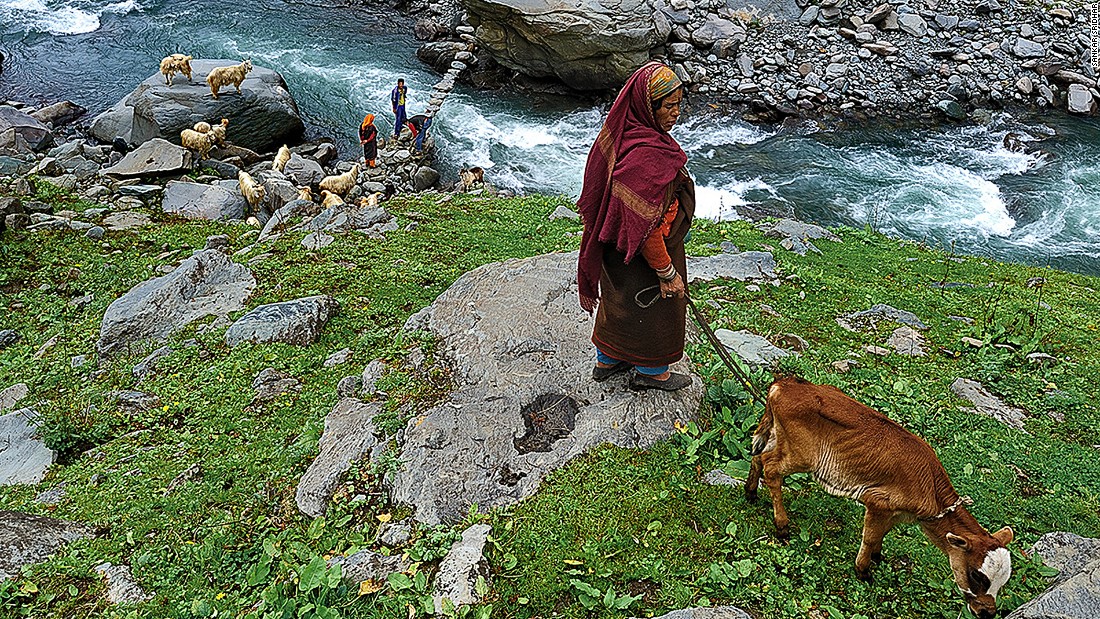
Bara Bangal is an Indian village cut off from the rest of the world by the 4,800-meter-high Kalihani and Thamsar Passes, sheer mountainsides and the Ravi River. Here, some villagers build a bridge over one of the streams that meets the Ravi.
If Google's the yardstick for measuring how much is known about our world, this village would rank pretty low.
Some blogs and a handful of images are all that the search engine reveals, apart from travel agencies touting it as a hard or strenuous trek.
There are conflicting stories about how the hamlet came about.
One speaks of residents of West Bengal fleeing a flood and finding shelter in the mountains.
Another credits a band of tired nomads with setting up the village because it was the only flat piece of land for miles around.
For the record, Bara Bangal holds the title of being the oldest village of the pastoral Gaddi tribe, the oldest settlement in the Kangra district, and the remotest polling booth in Himachal Pradesh.
The difficulty in reaching Bara Bangal is, perhaps, why it's been left to its own devices for so long.
Even today, horses carry rations for the villagers during the summer.
For most of the year their only contact with the outside world is through a satellite phone installed by the government — to be used only in emergencies.
The most hospitable villagers
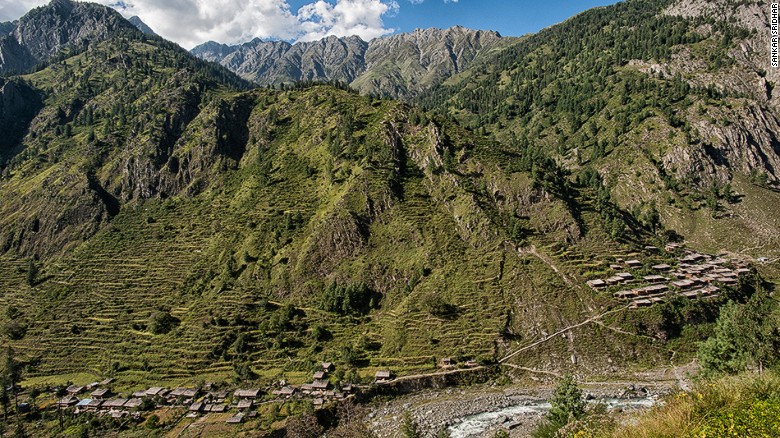
The huts on the left are the original village, while the settlements on the right are new additions.
I reach the village and pitch camp on the opposite bank of the river, beside a government primary school.
I'd have preferred to stay in the village, but since that would involve meetings with guard dogs that take their duties seriously, I decided against it.
Early in the morning, I awake to the sound of my tent being unzipped and find myself looking into two pairs of eyes — one belonging to a goat and the other to its master, Munna.
Twenty minutes later, I'm at Munna's house sipping tea, and having accepted his offer to be his guest, we head out to explore the village.
People are just beginning their day.
The boys are heading out to the fields — villagers grow one crop (kidney beans or maize) every year — the women are busy cleaning the houses, and the elders make themselves comfortable on the verandahs.
Everywhere we go, we are greeted with smiles, offered tea and invited to lunch.
When I tell them I've already promised Munna, invitations are extended for dinner, afternoon snacks, or breakfast, lunch or dinner the next day.
"It's tradition," says an old man who invites me to swig arrack (an Indian alcohol) with him. "We'd all be hurt if you don't eat or drink something in each house."
I turn to Munna for support.
"It's true, sir. That is how it is in this village," he says, crushing my hopes of at least staying sober in the morning.
As we sit down to drink, I take in details of the house.
Ancient way of life
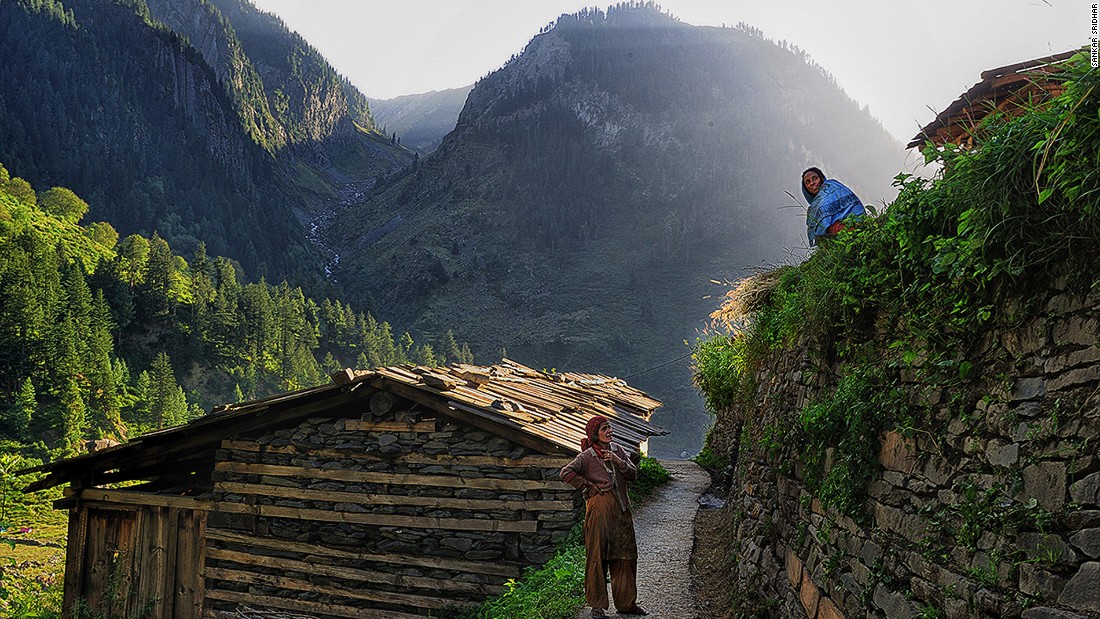
Bara Bangal's age shows everywhere, from the huts, to the trails through the village, and the walls that keep the mountainside from caving in. Here, two women chat while keeping a lookout for movement on the mountains that could be their husbands leading their flock back to the village.
Old would be an understatement.
This house, like the others in the village, seems to belong to a bygone era.
The hutments — each with a ground floor and a mezzanine — are made of smooth slate, supported by the massive trunks of pine trees.
The brick floors are coated with a mixture of cow dung and mud, and padded with stalks of grass.
If there's anything to remind me of the city, it's the larger-than-life posters of Bollywood stars, which the youngsters brought back from the city.
I ask the man if he's ever gone to Manali or Dharamshala, the hillside city known for being the hometown of the Dalai Lama.
"My son took me to Dharamshala," he says. "But I ran back in three days. It was too dirty for me."
Two drinks later, I excuse myself, keen on meeting more of the inhabitants.
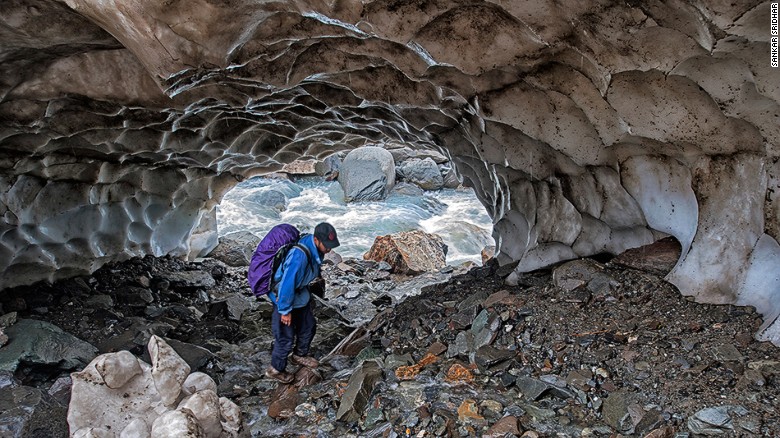
The route over Thamsar Pass on to Dharamshala is through a glacial cave.
Descendants of Alexander the Great?
One such villager is Uday Bhan, a weathered man with intense eyes, an insistence to match, and the most wonderful story of the setting up of the village.
According to Bhan, the village inhabitants are descendants of the soldiers in Alexander's army who weren't keen on the long journey back home.
Over time they built the village and married nomadic shepherdesses.
"That's why we are a different-looking people," he says.

There are conflicting stories about how the hamlet came about, the most colorful being that it was settled by soldiers who served under Alexander the Great.
It does make some sense — because history does document Alexander's return from the far bank of the Ravi.
How they thought up Bara Bangal for a name, though, remains a mystery.
My two-day stay passes by in a hurricane of activities.
I bid goodbye to the villagers, packing their gifts — incense branches, dried meat and a hand-woven shawl — into my rucksack.
The weather is souring, and I need all the warmth, wishes and protein to make the four-day journey over Thamsar Pass and onto Dharamshala.




